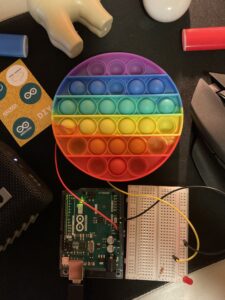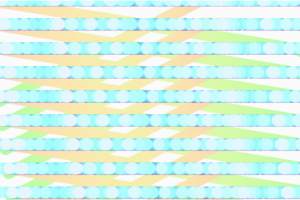MIDTERM
Metaportal : The brain spa
Concept
The Metaportal stands out as more than just your average project – it’s a creative endeavor that goes far beyond merely combining different artworks. This undertaking pays meticulous attention to every single component, ensuring that no detail is left to chance. From the welcoming and user-friendly interface to the delightful surprises cleverly hidden within each project, it’s clear that this is a labor of love.
Imagine it as a portal, leading you into a fresh realm of art, focus, and entertainment. As you explore, you’ll find yourself captivated by the fusion of creativity and functionality, where every aspect has been carefully tailored to enhance your experience. So, it’s not just a project; it’s a journey into an entirely new dimension of artistic expression, concentration, and sheer enjoyment.
The project’s concept revolved around the creation of an immersive gateway to showcase various distinct visual designs. It all began with the development of numerous visual art pieces employing tools like sine, cosine, angles, orbitControl, rotateX, and rotateY. After a prolific phase of crafting diverse visual designs, the objective shifted towards elevating the presentation. The aim was to construct a unified platform where each artwork could be elegantly exhibited, much like individual pieces of art.
the work of art
After extensive brainstorming and numerous iterations, I devised a captivating and aesthetic solution: a dynamically rotating “space” themed background, which I chose as the project’s main page. With the background in place, my next challenge was to create the entry points or “buttons” for users to explore and view the different art pieces. Given the uniqueness of each artwork, a conventional side-by-side display was not suitable. Instead, I opted to craft distinct 3D spherical structures using the same elements as the background. This choice lent a cohesive and consistent appearance to the main page. Notably, there were no previews of the artwork; instead, I incorporated question marks within these spheres, which, upon clicking, would transition users to the respective art pieces, enticing users to delve further into the virtual space.
After successfully creating the main page and investing countless hours in debugging, the next step was to introduce audio to the project. I decided to use a no-copyright interstellar-themed instrumental track to complement the visuals. The real challenge arose when I aimed to link the spheres with question marks to other art pieces, each presenting its own unique set of visuals. It was a daunting task, and I spent hours searching for a suitable function within p5.js that would allow me to create hyperlinks for transitioning between these projects. While I did find the “CreateA” function, which was helpful for establishing links from the main page to the intended sketch, I encountered a significant roadblock: p5.js did not support the ability to navigate back to the main page seamlessly. This limitation posed a considerable obstacle, particularly because I had opted not to use separate pages due to the project’s rendering-intensive nature. Combining all the visual projects in a single file was not a viable solution, as it would overwhelm p5.js and result in crashes. After enduring hours of stress and frustration, I finally discovered that the only viable approach was to circumvent the p5.js terminal entirely. In a determined effort to overcome this challenge, I downloaded all the p5.js project files I had and imported them into Visual Studio Code. While I continued to work with the p5.js language, I was no longer reliant on their terminal. In this new environment, I successfully managed to establish the desired interconnections between all the projects.
Afterwards, I focused on incorporating audio into the visual art pieces, which added an even more artistic dimension to the project. Given the uniqueness of each artwork, it necessitated selecting audio that harmonized with the colors, tempo, and patterns of each piece. As someone who enjoys instrumental music, particularly the saxophone, I began exploring a variety of non-copyrighted pieces for use in the project. Once I had gathered a selection, I aimed not only to create a visually appealing and aesthetically pleasing experience for users but also to infuse a bit of my personality into it, making it truly my own. To achieve this, I handpicked a few songs that I personally love, such as “Sway” by Michael Bublé and some tracks by Amr Diab, like “Tamally Maak,” in their instrumental versions. I opted for this approach to ensure that users could be fully immersed in the experience, regardless of their familiarity with the songs being played. For those who recognized the selected pieces, it would also serve as a delightful easter egg! Since I found the visual art to be highly enjoyable and calming, I also incorporated some lofi music into a few of my projects for the user to relax and have it as a background music.
The Main page – (p5 Incomplete)
click this link to open the p5 project on github
https://zuett.github.io/Intro-midterm/
Reflection
I’m thrilled about the prospect of advancing this project, as I envision it evolving into a captivating immersive visual experience. The idea is to create an application that users can seamlessly run in the background on a secondary screen, enabling them to enhance their focus on work and find moments to unwind in the midst of their daily tasks.
Imagine users being able to effortlessly integrate this immersive experience into their work environment. As they navigate their tasks and responsibilities on their primary screen, this secondary visual journey would serve as a calming and engaging companion. It will not only elevate their concentration but also provide an escape into a world of soothing illusions, offering a mental retreat right at their fingertips. This concept is a fusion of work and relaxation, a unique blend of productivity and serenity. Users can toggle their attention between their primary work and this immersive backdrop as needed, seamlessly transitioning from deep concentration to brief mental respites. It’s all about creating a harmonious balance, where work and relaxation coexist in perfect synergy. As I continue working on this project, the goal is to develop an extensive array of visually captivating scenes and experiences, each carefully designed to induce a sense of calm, creativity, and inspiration. These scenes will be more than just eye candy; they will be crafted to promote mental well-being, helping users recharge and refocus whenever they need it. In essence, this immersive background experience is not just a tool but a companion, a portal to a world of tranquility and aesthetic delight, ready to aid users on their journey towards enhanced productivity and a balanced, focused mind.







